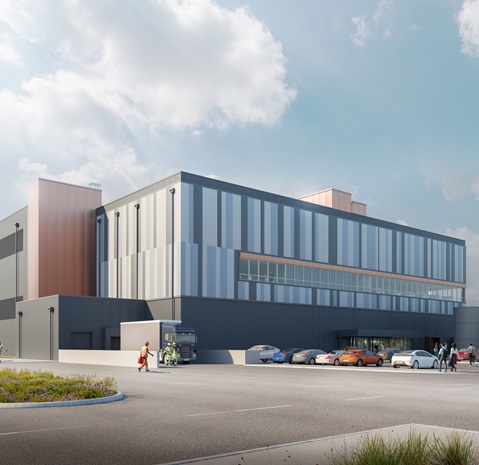As digital infrastructure expands at a rapid pace, the need for data centers that are efficient and resilient while minimizing the environmental footprint is also growing. The requirements are extensive to ensure that servers and data management are properly protected. “We consider it a stamp of quality that Ruukki with it’s products and expertise has become a significant supplier to the data center industry,” says Rasmus Larsson, Product and Services Manager at Ruukki Construction.
Building a data center is a complex project requiring specialized knowledge in materials, electrical systems, cooling, security, and networks. These projects also involve extensive planning, technical know-how, and compliance with a wide range of permits and regulations.
Over the past decade, Ruukki Construction has established itself as a key supplier of steel-based wall and roof solutions for data centers across the Nordics. The company’s product portfolio of profiled roofing sheets and sandwich panels for walls and roofs is weather resistant and fire regulation compliant — making them ideal for buildings with strict safety requirements.
Stamp of quality of expertise and products
But supplying high-quality products on time is not enough. To qualify as a data center supplier, companies must also provide detailed technical documentation, full-scale testing, extensive certifications, and third-party validations.
“It’s a real stamp of quality both of our expertise and our products that we are trusted to supply data centers,” says Rasmus Larsson, emphasizing that the requirements for these types of buildings are extremely demanding.
“Roof and wall structures need to be strong and stable—yet as thin as possible to be both cost-effective and environmentally sound. It’s also common for the constructions to meet the requirements of corrosion class C4. Furthermore, data centers must be airtight to allow operators full control of indoor climate across various rooms via cooling and ventilation systems,” he continues.
Close collaboration and tailored solutions
Ruukki’s experts often work closely with architects and structural engineers in the early stages of a project, identifying challenges together and developing solutions that meet the customer’s specific requirements.
“This might include specially designed sandwich panels dimensioned to withstand the mechanical stress and wind loads specific to the site. We’ve also designed and delivered interior walls for data centers built in repurposed buildings, where the premises previously served an entirely different function—an approach that’s both economical and sustainable,” explains Rasmus Larsson.
Pilot project for Amazon in Västerås
Ruukki’s ability to deliver aesthetically appealing and technically advanced building products recently resulted in a prestigious assignment: providing solutions for three data centers in Sweden for Amazon Web Services. The delivery includes steel-based wall and roof solutions for the cloud provider’s new facilities in Eskilstuna, Katrineholm, and Västerås.
The data center in Västerås served as a pilot project for Ruukki® Life LowCarbon sandwich panels, made from fossil-free steel and a core consisting of more than 70% recycled glass. As a result, these panels combine lower carbon emissions with excellent insulation performance. At the same time, they help to reduce the energy consumption of the facility.
Ruukki’s new LowCarbon series features steel-based building products manufactured using the groundbreaking HYBRIT technology—developed through a collaboration between SSAB, LKAB, and Vattenfall. Instead of using coal as a reducing agent in the steelmaking process (which generates large volumes of CO₂), hydrogen is used, resulting in a simple by-product: water.
“Our lower-carbon building products contribute to maximum structural strength and lower climate impact for Amazon,” says Rasmus Larsson.
The three data centers, showcase how Ruukki’s innovative steel-based wall and roofing products are setting a new standard in regards to minimizing the environmental footprint for digital infrastructure.





.tmb-250x190.jpg?sfvrsn=607438b5_1)






